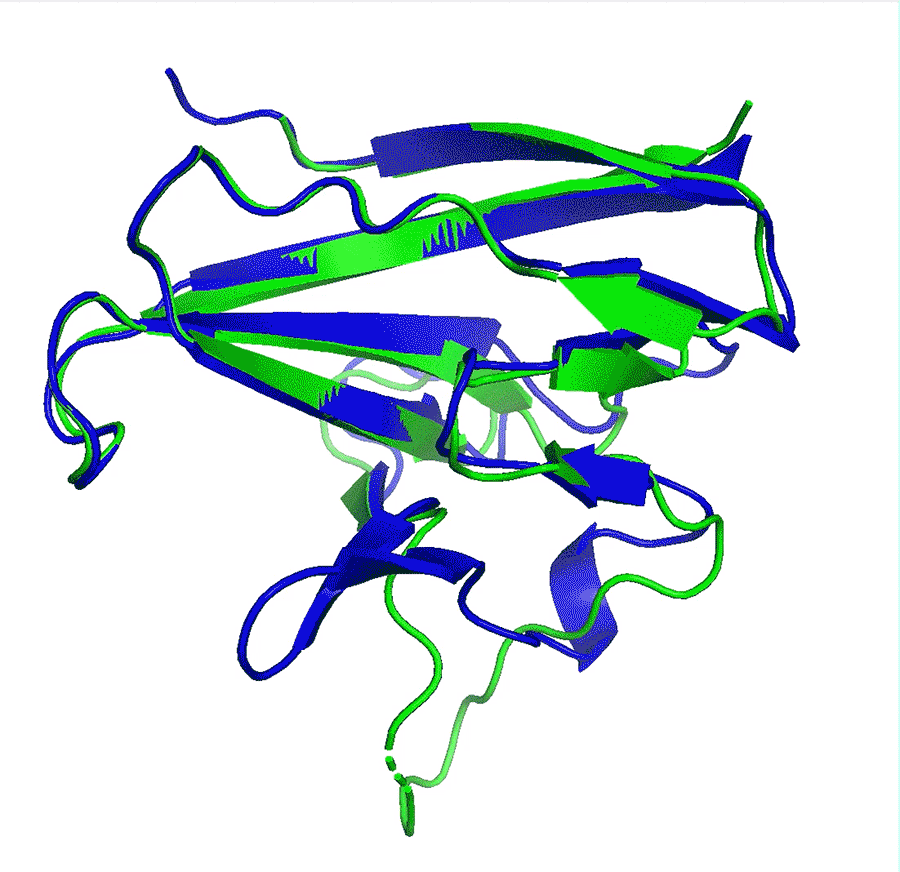All articles by Kira Welter – Page 4
-
 Research
ResearchGoogle’s AI aces protein prediction competition
Deep-learning network AlphaFold2’s perfomance at predicting how proteins fold has caused great excitement in the scientific community
-
 Research
ResearchNew approach to make chiral amines from internal olefins revealed
Clever reaction design enables the direct addition of N–H bonds to unactivated internal alkenes with high enantioselectivity
-
 Research
ResearchEntirely new way of sensing iron discovered in bacteria
Novel class of riboswitches can directly and selectively sense iron
-
 Research
ResearchNanotubes enable first atomic-scale observation of nucleation’s baby steps
Single-walled carbon nanotubes and transmission electron microscope used to watch tiny metal crystals form in real time
-
 Research
ResearchDesigner plastic can be recycled over and over again
Bicyclic thiolactone building block makes for high-quality polymers with chemical recyclability
-
 Research
ResearchAniline synthesis turns to photochemistry to access challenging targets
New photochemical strategy could jump in where common cross-coupling reactions fall short
-
 Research
Research‘Nanolympiadane’ created from supramolecular building blocks
A self-assembly approach has enabled the synthesis of large interlocked rings including a structure that resembles the Olympic logo
-
 Research
ResearchMechanical force used to trigger isomerisation in 3D molecule
An atomically sharp scanning tunnelling microscope tip has been used to control the isomerisation of a butterfly-shaped compound
-
 Research
ResearchMolecular machine enables polyrotaxane synthesis with unprecedented precision
Artificial pumps can add up to 10 molecular rings onto polymer dumbbells in a controlled manner
-
 Research
ResearchProtein synthesis revolution on way as large peptides made in hours not days
Flow chemistry can now make peptide chains up to 164 amino acids long in one go
-
 Research
ResearchHydrogel boosts power of self-cooling solar panels
Material that sucks water from air increases solar cells’ performance by up to 19%
-
 Research
ResearchFirst glimpse caught of how a molecule changes when it absorbs light
X-rays enable direct observation of the initial step of a light-driven reaction
-
 Research
ResearchAlgorithm can map scores of possible chemical transformations for any set of reactants
New tool could help scientists to control the properties of target molecules by simply switching the reaction while using the same starting materials
-
 Research
ResearchStructure-based AI tool can predict wide range of very different reactions
Molecular properties, enantioselectivities, yields and relative conversion can all be modelled by the same program
-
 Research
ResearchRotaxane–gold complex is in good shape for catalysis
A new type of catalyst containing a mechanically planar chiral rotaxane shows promise for organic synthesis
-
 Research
ResearchNew class of recyclable permanently porous liquid doesn’t need a solvent
Coordination cages that are liquids at room temperature may find uses in catalysis, sensing or chemical separations
-
 Research
ResearchProgram finds 5 million synthetic routes to complex chemicals
Only around five hundred ‘tactical combinations’ for advanced organic synthesis existed – until Chematica was let loose on the problem
-
 Research
ResearchLarge, high-quality perovskite films for solar cells created at record speed
High speed deposition of perovskite films paves the way to commercialisation of promising solar technology
-
 Research
ResearchRobotic system can plan and perform biosynthesis without human intervention
New strategy combines machine learning with automation and has proven itself optimising a complex biochemical pathway
-
 Research
ResearchHigh-resolution 3D printing shows promise for lab glassware
New technique that uses phase-separating resins could help in the 3D printing of reactionware